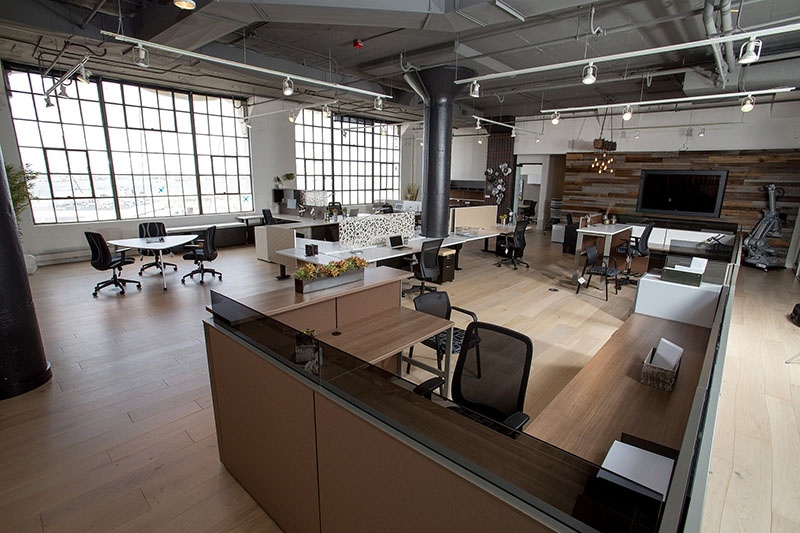
I’m both grateful and touched that last week’s post definitely convinced you to keep your agency at least partly remote even after the pandemic winds down. (I mean, of course it did. You’re a reasonable person.) The next question, of course, is how to establish an effective remote or hybrid work setup in an unfamiliar world.
This might sound like a chore, but it’s actually an opportunity to make things better. It’s an opportunity to step away from the things your agency does just ‘cause it’s always been done that way and find things that are more efficient, more conducive to employee happiness, that you’ve never bothered to consider. Yes, it’s work, but you’re already working on a plan to get everyone back in the office. While you’re doing it, just do it better.
Here are a few more questions to ask yourself.
(Sorry about all the questions.)
(But technically, I’m answering all of them for you, so this isn’t really a burden on you, so I’m not listening to complaints.)
How can I guarantee my remote employees will stay on an advancement track, even without face time?
This might be the single greatest concern for employees who want to continue to working from home. (They have other concerns, too, but this might be the biggest one.) For many, full-time or part-time remote work can have a huge positive effect on their productivity, creativity, and mental health. But it can have a less-than-positive effect on their career advancement.
A lot of things unrelated to quality of work become considerations in advancement decisions. The employee who’s the first to arrive and the last to leave is often seen as a go-getter ready for greater things. The one who never takes time off for family-related things might appear to be ready for more responsibilities, in contrast with the one who does. (FYI, there’s a gender component here as well.) It’s frequently a subconscious thing, but it can have a huge impact on an employee’s professional development. And it becomes even more pronounced when one employee is right in front of you and an equally (or even more) qualified employee is working from home. The effect can be that your employees who work from home for reasons like family needs or disabilities get passed over for well-deserved advancement, and you definitely don’t want that, right?
Right?
Mentorship programs are also a big part of this. Often, they’re a fairly casual affair, with lots of popping of heads into offices and cubicles and lots of advice dispensed on the fly. When physical proximity is less of a thing, intentionality needs to be more of a thing. Regularly scheduled check-ins can ensure face time (via FaceTime?) even at a distance, and mentors and management can make a concerted effort to provide support, make connections, assess progress, and answer questions virtually the way they would in the office.
How do I manage meetings and get-togethers when half my people aren’t there?
If the past more-than-a-year of remote work has shown us one thing, it’s that Zoom meetings do work… in many/most but not all circumstances. It’s natural to want to take advantage of newly restored physical proximity to move all those virtual meetings back to the real-life office. But how does that work when half your employees aren’t in that office?
Your first question should really be: How many of those activities actually need to be in person? (I mean, hell, how many of them need to take place at all?) Y’know that status meeting where everyone sits down and the traffic person goes down the list of projects and reads aloud what everyone’s doing? Does that really need to be in person? Is there something about it that’s better in person than it has been via Zoom for the past year? Could this meeting be virtual? Should It Be An Email(TM)?
If, after a frank assessment of your agency’s needs, you determine that some activities absolutely, definitely, completely have to be in person, consider consolidating your scheduling. Pick one in-the-office day a week and schedule your you-had-to-be-there meetings for that day. Keep in mind, though, that you’ll still have to set up a Zoom connection or similar for the benefit of any employees who stay remote anyway. Inconvenient? Maybe. But look at how happy your employees are. Look at their smiling faces. Look at the ones who chose to put on pants and come in to the office even though they really prefer working from home. That’s called teamwork.
Robin, Built In, and Wild Apricot all have good advice on setting up a hybrid workspace, managing interaction, and making sure remote employees are thoroughly incorporated into office goings-on and feel like part of the team.
What aspects of office culture do we really need to hold onto, and how can we do that?
Like professional advancement, some common aspects of office culture have traditionally depended on in-person contact. One thing a lot of people, in-the-office and work-from-home proponents alike, have mourned over the past year is the loss of some of those cultural touchstones.
They don’t have to stay lost, and they can even be joined by new ones. They just have to be adapted for a new way of working. If in-office birthday parties and other in-person celebrations are a crucial part of office culture at your agency, do they all have to be on the actual day of the occasion? If you delay them and have one huge, blowout party on one of your scheduled in-office days, will the Earth fall from its orbit and plunge into the sun? For that matter, it could be nice to close out a day of boring meetings with a huge-ass party.
While you’re at it — and I’m not going to tell you how to live your life (except that’s literally what I’ve been doing for the past two posts) — it’s a good time to reexamine what kind of off-the-book roles have been imposed on your employees. Who’s been responsible for buying all those birthday cakes? Who ends up doing the “non-promotable tasks”? Do you have an established, volunteer Office Culture Advancement Group, or has it just been laid on Sheila the Production Artist because she’s always so nice and so good about remembering birthdays? (Why did I single out Sheila? Because, per one study, women are assigned 55 percent of work in the office and do 10 percent more than men.) If you don’t have a group made up of volunteers who love organizing fun events for their coworkers more than life itself, it might be time to put one of those together.
Just remember to always incorporate remote employees in your office activities. Many of them will, because of distance, have to miss out on things like Happy Hours and in-office parties and such. Sending them care packages, establishing new group activities that are remote-friendly, and always making sure to establish a channel for remote workers when the office gets together tell your remote employees you care.
Are there benefits to having a hybrid office?
You mean, other than the ones I’ve been naming this whole time? Of course there are. Consider that once you’ve enabled effective work in and out of the office, you have a way to better work with your employees when they’re on the road (whenever we’re able to get back on the road). If someone has to work from home because of, like, family reasons that don’t actually require their constant attention, they don’t have to burn a day off, and you don’t have to lose productivity.
Also, your local office has become basically a national office, because you’re now equipped to pursue employee candidates across the country. You can work with employees in California and Tennessee and wherever just as well as you do with your local employees who are working from home, because the only added inconvenience is time zones.
Just don’t take advantage of it. If your employee is home with a sick kid, or on vacation, or if it’s a holiday, don’t bug them with work stuff just because you can. It’ll be tempting, but don’t give in.
Congratulations! You’ve made it through and earned a special surprise.
Knowledge is its own reward, of course, but I promised you a special reward for reading all the way to the end. So, Caperton Gillett Creative’s latest intern, Charlie:

LOOK AT THAT FACE. LOOK AT THAT FREAKING FACE. LOOK AT IT.
YOU’RE WELCOME.

